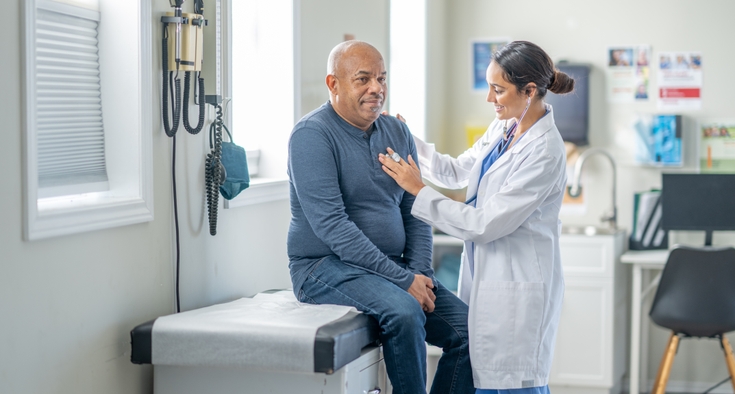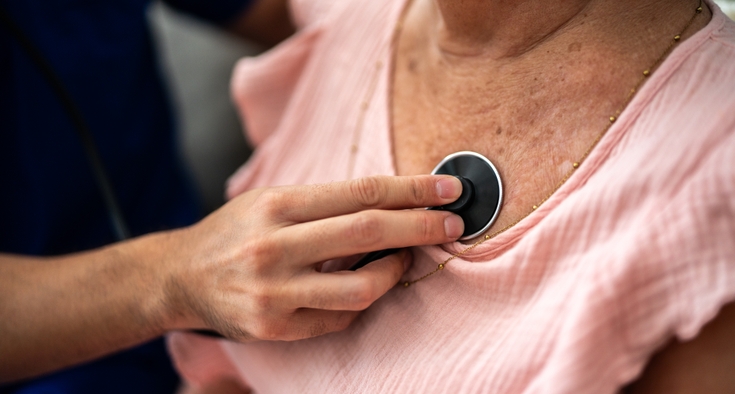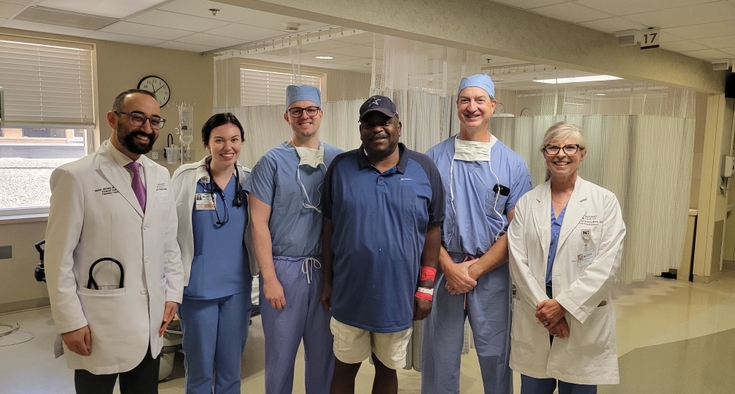If you have peripheral arterial disease (PAD), you have a lot of company. About 6.5 million people older than 40 in the United States have this chronic disorder, according to the Centers for Disease Control and Prevention.
The disease is caused by fatty deposits known as plaque that build up in blood vessels and eventually restrict blood flow to the legs. Smoking and poor weight management are among the greatest risks for the condition.
Coronary artery disease is strongly prevalent in PAD patients. Without treatment, PAD can lead to leg amputation.
Now the good news: Quitting smoking and modifying your lifestyle are crucial steps you can take toward lowering those risks.

“I try my best to shock people into something that’s going to keep their disease from progressing,” said vascular surgeon Dr. Edward Morrison of Novant Health East Cooper Vascular Surgery in Mount Pleasant, South Carolina, just east of Charleston. “One of the most effective things I can do is take an ultrasound and show the patient what their artery looks like.”
East Cooper Vascular Surgery joined Novant Health this year and offers treatment and management of carotid artery disease (blocked blood vessels leading to the brain) and pulmonary embolism (blocked arteries in the lungs), among other vascular conditions.
Here, Morrison explains what patients and their families can expect following a PAD diagnosis.
Exceptional cardiovascular care.
PAD diagnosis
How do patients typically react when you diagnose PAD?
It depends on why they’re in the office. You have everything from older patients who have become much less active to someone who may have a dead toe. We want to prevent chronic limb-threatening ischemia, which is advanced PAD and carries a risk of amputation.
We do our best to manage PAD and get people moving, and sometimes that requires leg bypass surgery to open blood vessels and clean arteries. That said, we do not operate on most of the patients with peripheral arterial disease. Instead, we do a lot of counseling. I’m not a counselor; I’m a vascular surgeon, but I manage medications and modify risk for PAD patients.
Surgery and PAD
Who’s a candidate for surgery?
We try to keep patients out of the operating room. Of course, that all depends on cigarettes and weight loss. The biggest problem is the demon, and the demon is nicotine – the most addictive compound on the face of the earth.
To be a candidate for surgery, you’ll need to modify your risk factors. If a patient won’t quit smoking, an operation is not going to change that patient’s five-year longevity. But if surgery is necessary, we prefer to perform minimally invasive angioplasties, which use balloons or stents to widen those blocked arteries. Minimally invasive means incisions are small and recovery is much faster than with traditional surgery.
Lifestyle and PAD
What should a sedentary person do right away to help manage PAD?
There’s no magic to it. We push patients to walk for at least 30 minutes a day to dramatically reduce amputation risk. They’re going to get better if they take care of themselves, and that requires appropriate medical intervention and modifying risk factors. If we can get a blood vessel open, the patient can get moving.










